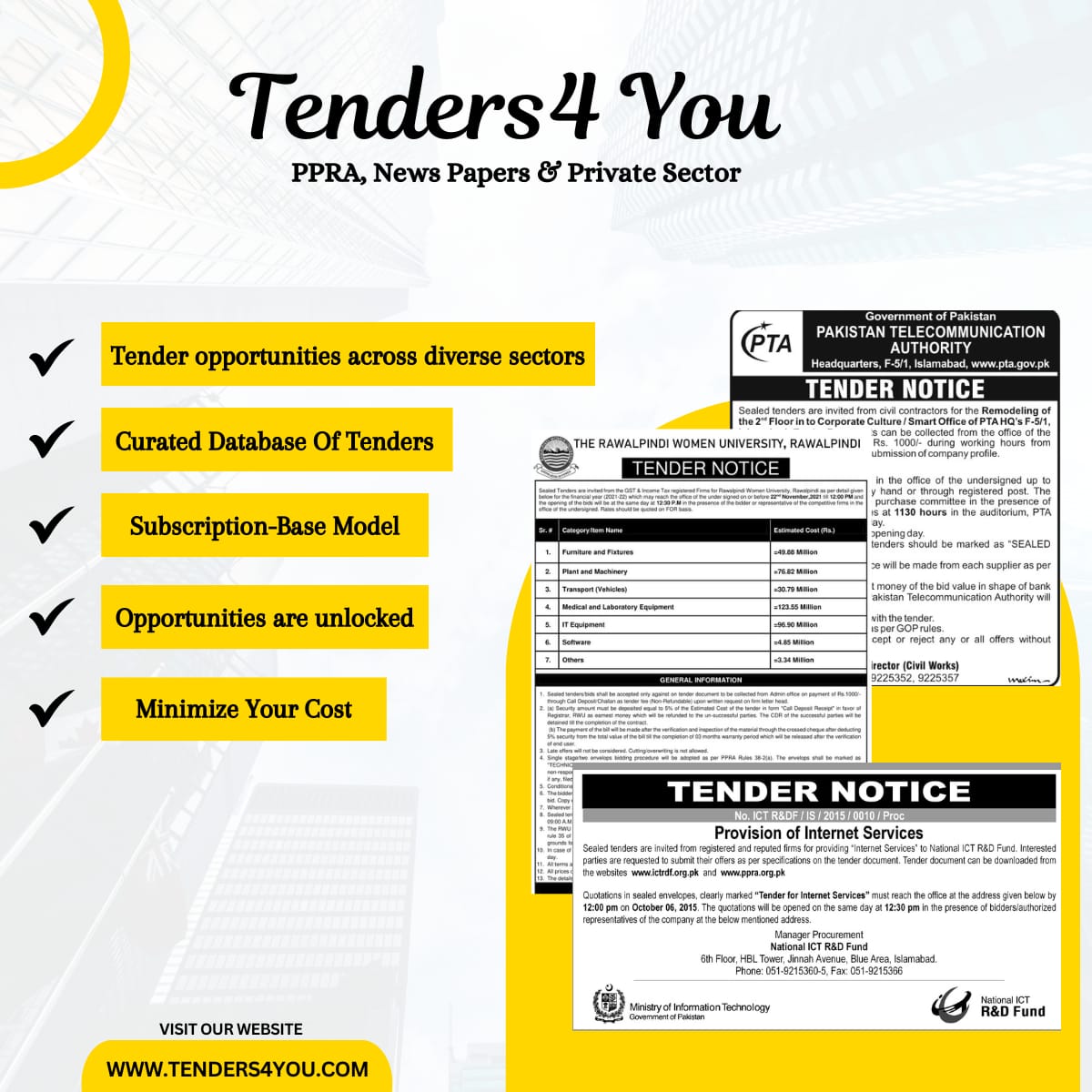
Introduction
Railway tenders might seem like a niche topic, but they play a crucial role in developing and maintaining our rail infrastructure. Whether you’re a seasoned contractor or a curious newcomer, understanding the ins and outs of railway tenders can open up a world of opportunities.
What Are Railway Tenders?
At its core, a railway tender is an invitation to bid for projects related to the construction, maintenance, supply, or consultancy services within the railway sector. These tenders ensure that railway projects are carried out efficiently, economically, and to a high standard.
Types of Railway Tenders
Railway tenders come in various forms, each serving a specific purpose:
- Construction Tenders: For building new railway lines, stations, and related infrastructure.
- Maintenance Tenders: For the upkeep and repair of existing railway infrastructure.
- Supply Tenders: For providing materials and equipment needed for railway operations.
- Consultancy Tenders: For expert advice and project management services.
The Importance of Railway Tenders
Why are railway tenders so significant? They ensure transparency, competition, and quality in the execution of railway projects. Let’s delve deeper into their impact.
Economic Impact
Railway tenders contribute significantly to economic growth. They create jobs, stimulate local economies, and ensure efficient transport networks, which are vital for trade and commerce.
Infrastructure Development
Tenders ensure that railway infrastructure is continuously developed and maintained. This keeps our trains running safely and efficiently, which is crucial for both passenger and freight services.
How to Find Railway Tenders
Finding the right tender can be a game-changer. Here’s where you can start your search:
Government Websites
Many countries have dedicated government portals where railway tenders are published. These sites provide detailed information and are a reliable source.
Tender Portals
Several online platforms aggregate tender opportunities from various sources. Websites like TenderTiger and TendersInfo are great places to find relevant tenders.
Newspapers and Trade Journals
Traditional media still plays a role in the tender process. Newspapers and industry-specific journals often publish tender notices.
Understanding Tender Documents
Tender documents can be daunting, but breaking them down helps.
Key Components
- Scope of Work: Detailed description of the project requirements.
- Eligibility Criteria: Conditions that bidders must meet to qualify.
- Submission Guidelines: Instructions on how to submit your bid.
- Evaluation Criteria: How the bids will be assessed.
Common Terminology
Understanding terms like “BOQ” (Bill of Quantities) and “RFP” (Request for Proposal) can make a big difference in navigating tender documents.
The Bidding Process
The bidding process is competitive and multi-step.
Pre-qualification
Before submitting a bid, companies must often go through a pre-qualification phase to ensure they meet basic criteria.
Submission of Bids
Detailed proposals are submitted, including technical specifications, financial details, and compliance documents.
Evaluation Process
Bids are evaluated based on various factors, such as cost, technical capability, and past performance.
Key Considerations in Railway Tenders
Success in railway tenders isn’t just about the lowest bid. Here are some critical factors:
Compliance with Regulations
Adhering to legal and regulatory requirements is paramount.
Financial Capability
Proving financial stability and the ability to fund the project is essential.
Technical Expertise
Demonstrating technical know-how and experience can set you apart from the competition.
Common Challenges in Railway Tenders
Bidding for railway tenders isn’t without its challenges.
Competition
The competition can be fierce, with many companies vying for the same project.
Stringent Requirements
Meeting all the tender requirements can be demanding.
Financial Risks
Projects often involve significant financial investments and risks.
Tips for Successful Bidding
Here are some tips to increase your chances of success:
Thorough Research
Understand the project, the client, and the competition.
Clear Documentation
Ensure all documents are complete, clear, and comply with the tender requirements.
Competitive Pricing
Price your bid competitively but ensure it covers all costs and leaves a margin for profit.
Case Studies of Railway Tenders
Learning from past projects can provide valuable insights.
Successful Projects
Examine case studies of successful tenders to understand what worked well.
Lessons Learned
Look at projects that faced challenges and learn from their mistakes.
Future Trends in Railway Tenders
The world of railway tenders is evolving. Here are some trends to watch:
Technological Advancements
From digital bidding platforms to advanced project management tools, technology is revolutionizing the tender process.
Sustainability Initiatives
There’s a growing emphasis on sustainable practices in railway projects, which can influence tender requirements.
Impact of Railway Tenders on Local Communities
Railway tenders can have a profound impact on local communities.
Job Creation
New projects create jobs, boosting local employment rates.
Economic Growth
Improved railway infrastructure supports local businesses and can spur economic growth.
Conclusion
Railway tenders are a critical component of the rail industry’s development and maintenance. By understanding the tender process, preparing thoroughly, and keeping abreast of industry trends, businesses can successfully navigate this complex landscape. Whether you’re a small contractor or a large firm, there’s a wealth of opportunity in railway tenders waiting to be tapped into.
FAQs
What is a railway tender? A railway tender is an invitation to bid for railway-related projects, including construction, maintenance, supply, or consultancy services.
How can I participate in a railway tender? You can participate by finding relevant tenders on government websites, tender portals, or traditional media, and then submitting a bid according to the provided guidelines.
What documents are required for bidding? Commonly required documents include technical proposals, financial details, compliance certifications, and proof of eligibility.
What are the main challenges in railway tenders? Challenges include intense competition, stringent requirements, and significant financial risks.
How do railway tenders impact local communities? They create jobs, stimulate economic growth, and improve local infrastructure.







